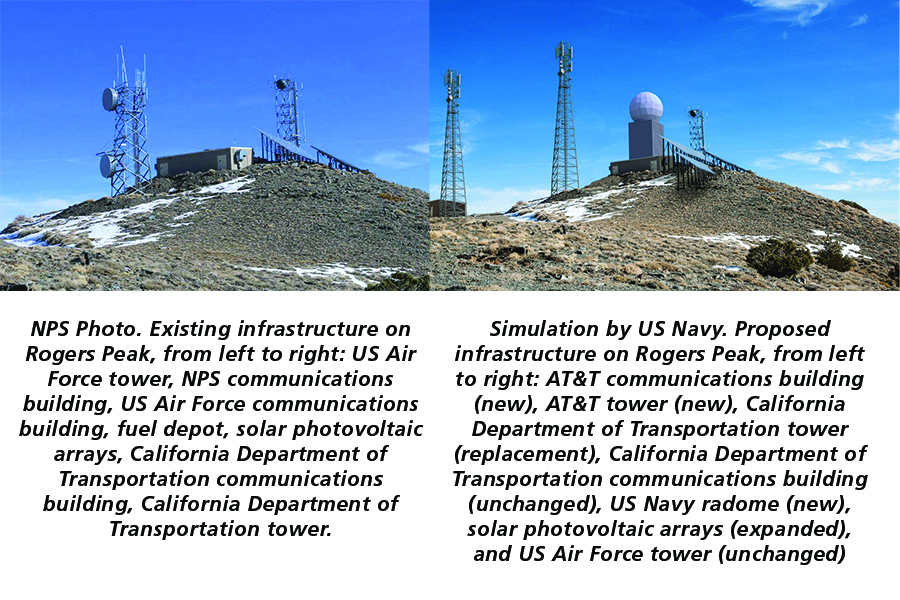
DEATH VALLEY, CA – The National Park Service (NPS) seeks public input on proposals to construct and operate telecommunications infrastructure on Rogers Peak, located in Death Valley National Park’s Panamint Mountains.
If the NPS approves the right-of-way permits, the following infrastructure would be added or changed:
- Navy Radome: China Lake Naval Air Weapons Station would build a 28-foot-diameter dome containing a telemetry antenna. This would be located on top of a support building, with a combined height of up to 60 feet. The telemetry antenna would provide enhanced monitoring of all military branches’ use of the R-2508 airspace.
- AT&T tower – AT&T Wireless would transmit cellular service from a tower up to 99 feet tall. This would provide cellular service in parts of Panamint Valley and Death Valley that currently have no signal. There would likely be capacity on this tower for other agencies or companies to co-locate in the future.
- Caltrans tower – The California Department of Transportation (Caltrans) owns a 50-foot-tall tower that is over-allocated and structurally unsound. Caltrans would remove this tower and construct a replacement tower up to 99 feet tall. The Caltrans tower also hosts communications equipment for Southern California Edison and multiple federal, state, and local agencies.
- Support infrastructure – Two small support buildings would be removed; their equipment would be moved to the base of the radome. AT&T would require a support building. Existing propane tanks would be increased in capacity and relocated. Solar panels arrays would be increased in size, and potentially installed in a new location.
Rogers Peak has housed telecommunications infrastructure since 1959. Currently, the National Park Service, the US Air Force, the Bureau of Land Management, the Federal Bureau of Investigation, the National Oceanic and Atmospheric Administration, Caltrans, the California Office of Emergency Services, the California Highway Patrol, Inyo County, and Southern California Edison have infrastructure on Rogers Peak. This existing infrastructure consists of a 50-foot Caltrans tower, 62-foot Air Force tower, three support buildings, propane tanks, and solar panels.
Initial public opinions of this proposal were divided, especially regarding the proposed cellular site. Some people expressed support, stating that increased cell coverage area would increase safety. Others opposed the proposed cellular tower, stating that one of the things they value about wilderness is an escape from technology.
Death Valley National Park encourages public participation throughout the planning process. The Rogers Peak Multi-Use Instrumentation and Communications Facility Environmental Assessment can be viewed online at http://parkplanning.nps.gov/deva. Comments can be submitted at the same website or mailed to Death Valley National Park, ATTN: Rogers Peak Environmental Assessment, P.O. Box 579, Death Valley, CA 92328 by January 13, 2019.
Before including your address, phone number, email address, or other personal identifying information in your comment, you should be aware that your entire comment, including your personal identifying information, might be made publicly available at any time. While you can ask in your comment to withhold your personal identifying information from public review, the National Park Service cannot guarantee that it will be able to do so.
Edited 1 time(s). Last edit at 12/15/2018 12:37PM by eeek.


